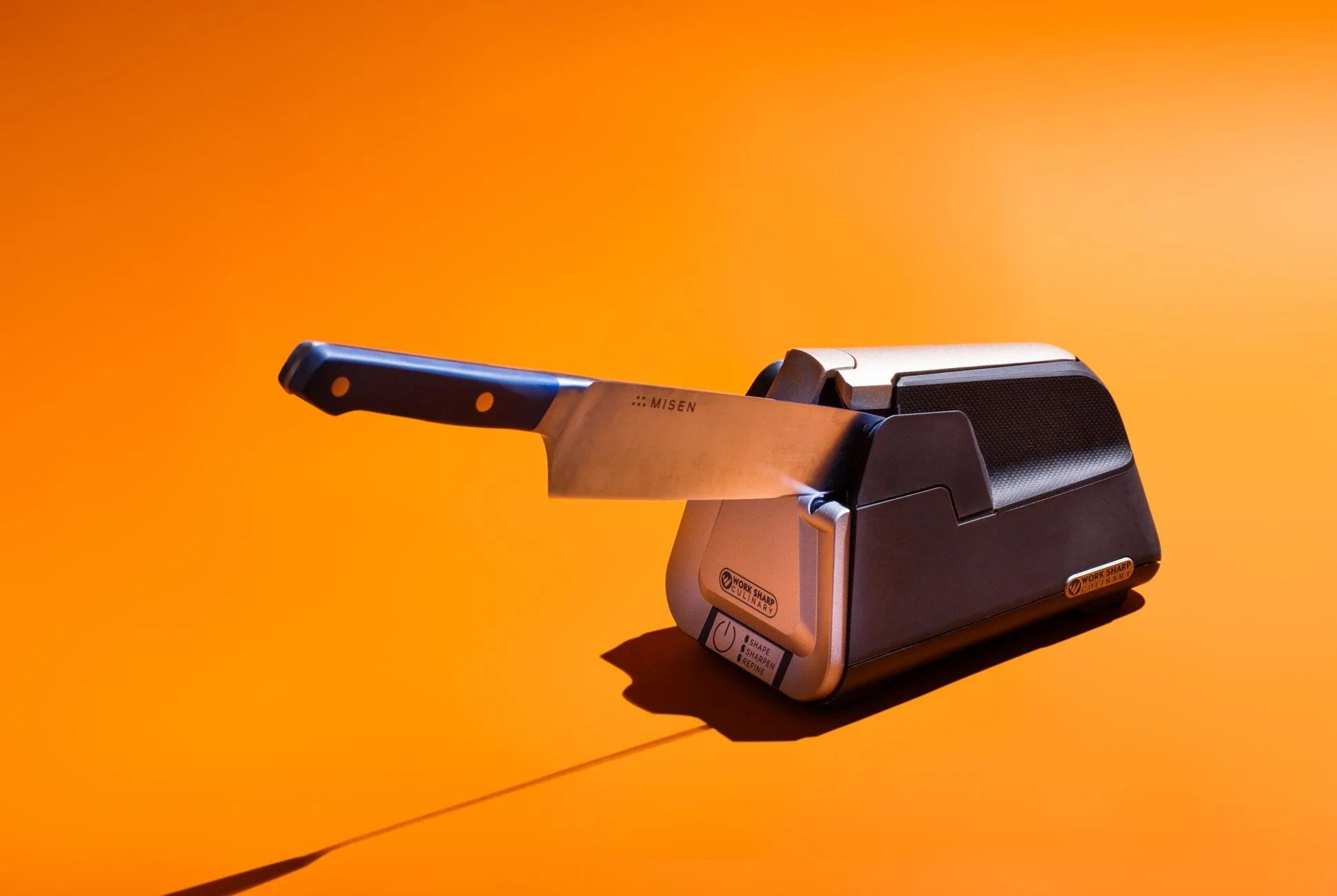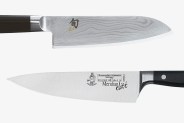My most-used chef’s knife, a no frills, entry-level model from Hampton Forge that gets shared among three roommates, went nearly three years without a single swipe on a whetstone or sharpening belt. An ounce of research would have yielded dozens of professional sharpening services in New York City. A few YouTube how-to’s would have left me with the confidence to use a manual sharpener. Instead, I let it succumb to a dull fate only serial neglect could muster.
So when Work Sharp Culinary reached out with an offer to test its new E5 electric knife sharpener, my shameful Hampton Forge seemed like suitable testing fodder.
Work Sharp Culinary is a subsidiary of Darex, a 44-year-old company that built its reputation on drill bit sharpeners and CNC machines for corporations like Boeing and Ferrari. In the last two decades, however, it has expanded into consumer markets with outdoor utility knife and drill bit sharpeners. According to Chris Loeffler, content manager and digital strategist at Darex, Work Sharp Culinary, was developed “as a separate brand [to create] a line of sharpeners that looked good enough to stay in the kitchen, that were small, quiet, clean, safe and dead simple to use.”
Those already comfortable using a whetstone likely won’t find much reason to invest in an electric sharpener.
The company’s current product line consists of the M3 manual sharpener, E3 electric sharpener and the newly launched E5 electric sharpener. The E5 is about the size of an electric pencil sharpener (the kind that pervaded grade school classrooms) and features variable sharpening modes. Whereas the E3 can sharpen and refine blades, the E5 is capable of shaping edges, too.
I watched Work Sharp Culinary’s how-to videos to get a sense of what I was in for. The walk-throughs were appropriately simple, but their uptempo elevator music left me in the dark — and, frankly, made me nervous — about how loud the E5 might be. Bracing myself for the roar of a blender, the whir of the abrasive belt was akin to that of a high-powered fan — by no means quiet, but certainly tolerable.
Recognizing how desperately my knife needed to be honed, I skipped over the “Sharpen” setting and went straight to “Shape,” the machine’s fastest and most powerful setting. Bumpers on either side of the E5’s abrasive belt help to position the blade to ensure an optimal 17-degree edge angle. Aligning the heel of the knife with the edge of the E5, and pressing so that the flat part of the blade was leaning against the guide, I pulled the knife through slowly, alternating sides until the cycle ends and the machine turns off.

